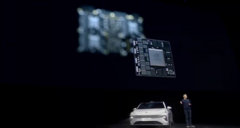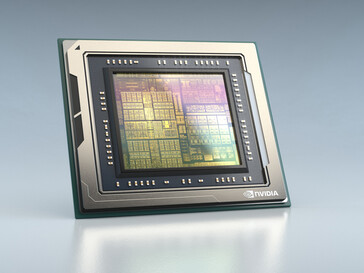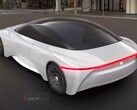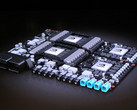Back during GTC 2020, NVIDIA announced the evolution of its Drive platform to the Ampere architecture. The NVIDIA Drive Orin SoC combines Ampere GPUs and ARM Hercules CPU cores to deliver 200 trillion operations per second (TOPS) performance that can scale from Level 2+ (AI-assisted driving) to Level 5 (fully self-driving) vehicles. Yesterday, Chinese electric automaker NIO announced that it will use NVIDIA Drive Orin for its latest ET7 Sedan.
NIO will use four Orin SoCs in its Adam supercomputer for advanced automated driving. These four Orin SoCs together feature 48 ARM A78 CPU cores, 256 3rd gen Tensor cores, 8,096 CUDA cores, and 68 billion transistors for a combined performance of more than 1,000 TOPS.
Leaving the ARM CPU cores apart, the combined GPU specs are reminiscent of a cut-down GA102 core. For perspective, the RTX 3080 uses 8,704 CUDA cores, 272 3rd gen Tensor cores, and 28 billion transistors. NVIDIA says Orin is the world's most advanced and highest performing automated vehicle and robotics processor that also meets ISO 26262 ASIL-D safety standards.
There is a division of labor among the four Orin SoCs in Adam. The first two Orins process 8 GB of vehicular sensor data every second. The third Orin is meant to serve as a backup to ensure safe operation in any situation while the fourth SoC is meant to personalize the driving experience by learning and training from user preference.
The NIO ET7 is the first intelligent electric sedan to make use of Adam. The vehicle can accelerate from zero to 100 kmph in just 3.9 seconds and also features a 150 kw battery for 600 miles of battery range. The ET7 sedan uses 33 sensors that help the vehicle adapt to the terrain it operates. For instance, sensors at the bottom of the car can detect the road surface and adjust the suspension accordingly.
Driver monitoring and voice recognition offer a easy interaction the moment one enters the car while the digital key and soft-closing doors ensure that the driver can open them with a gentle touch.
NIO first showed off the ET7 as a concept known as EVE back in 2017. The company said it will start shipping the ET7 sedan in 2022.





















